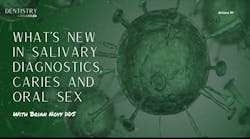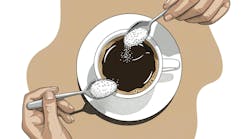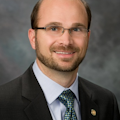Many clinicians are unaware of how the CAMBRA movement began, and most don’t realize a pivotal moment was the publication of the 2011 paper “Changing the face and practice of dentistry: a ten-year plan.”1 In case you happened to miss that groundbreaking paper, it represented an inflection point and a road map for a group of oral health-care champions on the leading edge of cariology.
Now, 14 years later, that short paper, which laid out how to change the dental ecosystem, provides historical context for what we see occurring in practice today. If you haven’t sensed the dramatic groundswell around prevention, remineralization, enamel regeneration, and salivary diagnostics, you may be quite surprised to realize how much cariology has evolved since the days of aciduric and acidogenic bacteria demineralizing hydroxyapatite.
In 2025, dentists have come to accept that patients can inherit soft teeth. Soft teeth can be genetic,2 and anyone who has treated a child for molar incisor hypoplasia knows how challenging it can be to strengthen a tooth that never formed hydroxyapatite or fluorapatite properly. The latest recommendations indicate glass ionomer is the best hope for these very susceptible teeth to slow the process of literally dissolving away.3
Salivary diagnostics
Salivary diagnostics are gaining acceptance by clinicians who can interpret the data in a meaningful way. But investing in technology requires a return on the investment, and there is no benefit in testing saliva but doing nothing to treat the underlying infection. Of course, when the infection is no longer caused by Streptococcus mutans and Lactobacillus, clinical protocols may need to be modified. To clarify, the recent research indicates dental caries may begin with Prevotella and Leptotrichia,4 or perhaps even a bacteriophage!5 Are the nonspecific and specific plaque hypotheses dead? Perhaps not, but it’s clear we have a lot to learn about what life-forms coexist within the biofilm (or what some microbiologists now regard as a hydrated biological polymer that behaves more like a tenacious liquid than a solid).
The science of remineralization
The concept and science of remineralization has advanced beyond simply hardening the outer surface zone of the caries lesion. Historically speaking, dentistry’s use of remineralization has been limited by the fact that the body of the caries lesion (the subsurface zone that is the largest and least mineral dense of an early caries lesion) is difficult to access with ions necessary for remineralization. In order to apply calcium and phosphate ions into this weakened area, chemistry is required that doesn’t simply add ions but instead creates new binding sites for those ions. Peptide scaffolds don’t actually remineralize the tooth; they create new binding sites that have been lost to demineralization and cause the formation, or regeneration, of enamel rod-like structures.6
As the science continues to self-assemble, we’ve learned that remineralization can be improved by slowing down and organizing the process of ionic deposition into weakened areas. The critical steps are completely removing the pellicle with sodium hypochlorite and then increasing the porosity of the surface zone with a short phosphoric acid etch.
The oral ecology is dynamic
No caries treatment is foolproof, and every clinician is familiar with the multifactorial nature of the disease. Unfortunately, in this new era of disease management, patients might place too much faith in our improved therapies and not alter their dietary and hygiene habits, which is paramount if the disease is to be effectively treated. The oral ecology is much more dynamic than we’ve previously appreciated (cariogenic biofilm is now understood to crawl, walk, and leap across surfaces like a creature made up of different life-forms). Cutting-edge treatment is directed at providing metabolic substrate to the organisms of the mouth and thereby “nurturing” the growth of commensal organisms with prebiotics like arginine.7,8
Preventive products with fluoride and xylitol
Recent news headlines about fluoride and xylitol have brought attention to the safety of preventive products. Fortunately, clinicians can find comfort in the Cleveland Clinic emphatically stating that consumers should not be concerned about xylitol in dental products,9 but rather as a sweetener in food. I personally strongly advocate for a bottle of water on the nightstand with 4 grams of xylitol added (in other words, one packet of xylitol). Not only does it make the water taste delicious, but it also turns your nighttime thirst quencher into a biofilm dissolution catalyst that can also improve the health of your whole breathing apparatus.
When it comes to fluoride, it appears the anion is going to have an encore. Clinicians in communities that defluoridate their water supplies should be prepared to prescribe fluoride supplementation to developing mouths (when the parents are accepting of fluoride-based prevention). If that isn’t possible, remember fluoride toothpaste foam has everything you need to reverse initial caries lesions, but the contact time must be sufficient.10 Therefore, encouraging patients to increase the contact time of toothpaste foam with their teeth is the most cost-effective strategy to treat dental caries. Finding your own personalized way to deliver the message to “Leave the foam alone” is a great way to start down a cariology care path, one that is supported by new salivary screening devices like SillHa by Arkray.11
Caries screening tests
If you’re unaware of the myriad caries screening tests now available, realize patients can purchase disposable toothpick-like explorers that change color when placed in a cariogenic site. There is no doubt that acidic areas of the mouth result in dental caries and erosive lesions.12 CaviSense toothpicks allow patients to monitor their lesions at home and adjust their preventive efforts. Or they may arrive for their next appointment knowing that the carious lesion you were “watching” will need to be restored, because the “little toothpick changed color.”
What impact will all this innovation have on how consumers seek oral health care? We’re about to find out. Get ready for some new conversations around caries management.
Editor's note: This article appeared in the May 2025 print edition of Dental Economics magazine. Dentists in North America are eligible for a complimentary print subscription. Sign up here.
References
- Young D, Ricks CS, Featherstone JD, et al. Changing the face and practice of dentistry: a 10-year plan. J Calif Dent Assoc. 2011;39(10):746-751.
- Lopes-Fatturi A, Fonseca-Souza G, Wambier LM, Brancher JA, Küchler EC, Feltrin-Souza J. Genetic polymorphisms associated with developmental defects of enamel: a systematic review. Int J Paediatr Dent. 2025;35(2):298-310. doi:10.1111/ipd.13233
- Denis R, Marty M, Esclassan R, Noirrit-Esclassan E, Canceill T. Description and durability of the various direct restoration techniques in molar-incisor hypomineralization: a systematic review. Eur J Prosthodont Restor Dent. 2025;33(1):113-122. doi:10.1922/EJPRD_2760Denis10
- Boisen G, Brogårdh-Roth S, Neilands J, Mira A, Carda-Diéguez M, Davies JR. Oral biofilm composition and phenotype in caries-active and caries-free children. Front Oral Health. 2024;5:1475361. doi:10.3389/froh.2024.1475361
- Chen X, Zou T, Zeng Q, et al. Metagenomic analysis reveals ecological and functional signatures of oral phageome associated with severe early childhood caries. J Dent. 2024;146:105059. doi:10.1016/j.jdent.2024.105059
- Güven E, Eden E, Attin R, Firinciog˘ullari EC. Remineralization of post-orthodontic white spot lesions with a fluoride varnish and a self-assembling P 11-4 peptides: a prospective in-vivo-study. Clin Oral Investig. 2024;28(8):464. doi:10.1007/s00784-024-05865-2
- Cho H, Ren Z, Divaris K, et al. Selenomonas sputigena acts as a pathobiont mediating spatial structure and biofilm virulence in early childhood caries. Nat Commun. 2023;14(1):2919. doi:10.1038/s41467-023-38346-3
- Banakar M, Fernandes GVO, Etemad-Moghadam S, et al. The strategic role of biotics in dental caries prevention: a scoping review. Food Sci Nutr. 2024;12(11):8651-8674. doi:10.1002/fsn3.4473
- Eating foods with xylitol can be a risk to your heart. Cleveland Clinic. June 7, 2024. https://health.clevelandclinic.org/dangers-of-xylitol
- Paiva MF, Delbem ACB, Danelon M, et al. Fluoride concentration and amount of dentifrice influence enamel demineralization in situ. J Dent. 2017;66:18-22. doi:10.1016/j.jdent.2017.09.004
- Novy BB, Kennedy E, Donahoe J, Fournier S. Minimizing aerosols with non-surgical approaches to caries management. J Mich Dent Assoc. 2020;102(7):48-56.
- Sangha JS, Gogulancea V, Curtis TP, et al. Advancing dental biofilm models: the integral role of pH in predicting S. mutans colonization. mSphere. 2025;10(1):e0074324. doi:10.1128/msphere.00743-24
About the Author
Brian B. Nový, DDS
Brian B. Nový, DDS, is the chief dental officer of the Alliance Dental Center, Massachusetts Public Employees Fund. He served as president of the National CAMBRA Coalition and is currently the consumer representative to the United States Food & Drug Administration Dental Products Panel. His awards include the American Dental Association (ADA) Adult Preventive Care Practice of the Year, the Academy of General Dentistry Weclew Award, the Dugoni Award, and the ADA Evidence-Based Dentistry Practice Award.



